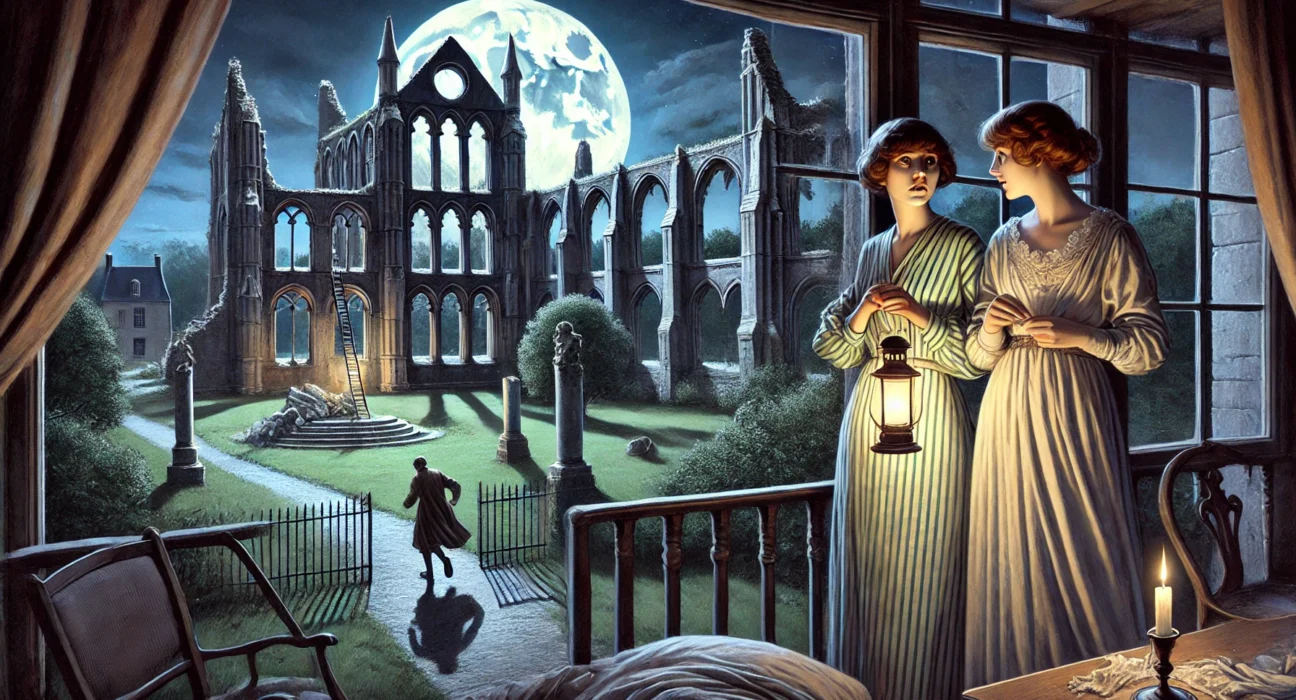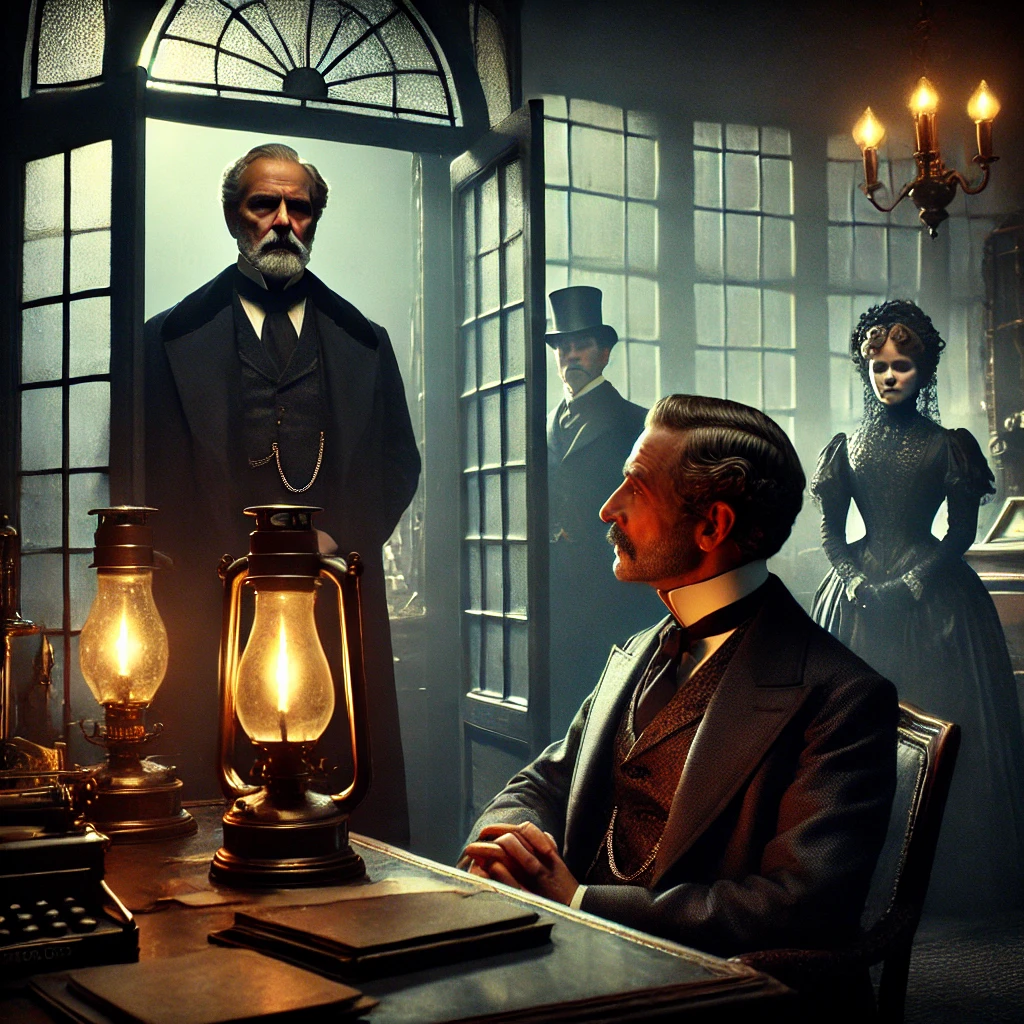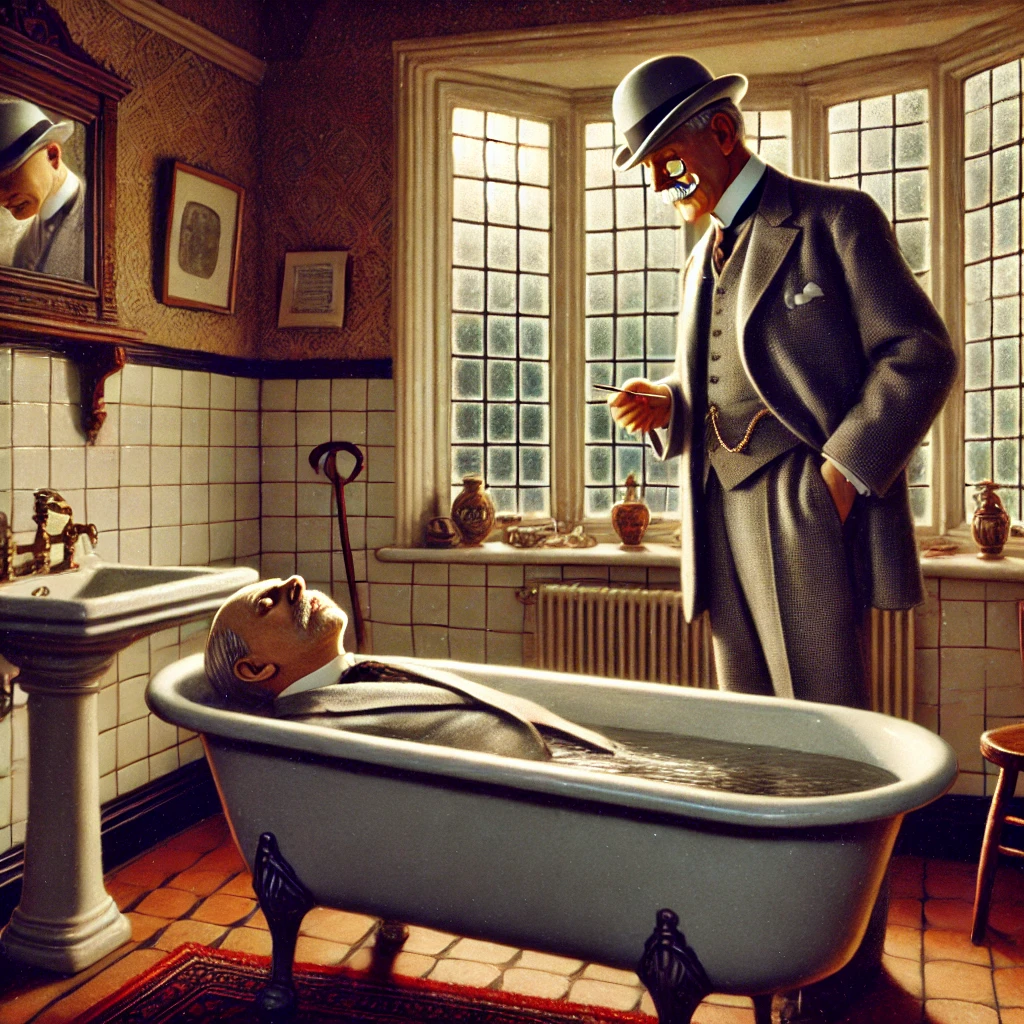The Hollow Needle (1911) by Maurice Leblanc is a classic mystery novel featuring Arsène Lupin, the legendary gentleman-thief created by Leblanc. The novel follows Lupin as he engages in a complex battle of wits, intertwining historical mysteries with clever thefts and evasion of authorities. Translated into English by Teixeira de Mattos Alexander, The Hollow Needle represents a high point in Leblanc’s Lupin series, highlighting the thief’s ingenuity in solving puzzles and eluding capture.
Plot Summary
In the quiet, rolling countryside of Ambrumésy stands an ancient chateau, home to the Comte de Gesvres. One fateful night, a disturbance breaks the stillness. Raymonde de Saint-Véran, the Comte’s niece, hears strange noises and, with her cousin Suzanne, witnesses shadowy figures descending from the house on a ladder. Two men flee into the darkness, one carrying a heavy burden, and a shot rings out. Racing down to the drawing room, Raymonde stumbles upon a chilling scene—her uncle lies unconscious, and the Comte’s secretary, Jean Daval, is dead, a knife wound in his chest.
The police soon descend on the chateau, determined to solve the crime and capture the men responsible. Leading the investigation is the persistent and experienced Chief-Inspector Ganimard, a man who has spent years pursuing Arsène Lupin, the notorious gentleman-thief. The crime, however, takes an unexpected turn with the appearance of Isidore Beautrelet, a young student with an impressive gift for deduction. Though still in school, Beautrelet’s sharp mind allows him to quickly grasp the complexity of the case. He immediately suspects that Lupin, master of disguise and trickery, is somehow involved.
Beautrelet examines the scene, piecing together the events of the night. He realizes that the two men who escaped with their stolen goods must have carried out the crime with a greater purpose than mere theft. But there is no sign of what was stolen. The treasures of the chateau, including priceless paintings, are untouched. This paradox perplexes the investigators, but Beautrelet remains certain that the mystery lies deeper, possibly connected to the legendary Hollow Needle.
The Hollow Needle, a centuries-old secret tied to the kings of France, is said to contain a treasure beyond imagination, hidden away from history. Beautrelet begins to suspect that the Comte’s chateau may hold the key to this long-lost secret. His suspicions are only strengthened when he learns that Lupin, whose exploits have long danced on the edge of myth, might be searching for this treasure himself.
While Ganimard and the local authorities continue their search for the fugitives, Beautrelet turns his focus to unraveling the enigma of the Hollow Needle. His investigations reveal that Lupin’s interest in the chateau is not merely for wealth but for the legendary needle itself. This symbol, hidden in plain sight, is linked to a puzzle inscribed in the old stones of the abbey ruins near the chateau. Beautrelet soon realizes that the Hollow Needle is more than a mere object; it is a metaphor for an intricate system of tunnels and secret passages that conceal the fabled treasure.
In a stunning confrontation, Beautrelet finally crosses paths with Arsène Lupin. The two engage in a battle of wits, with Lupin always remaining one step ahead, elusive and taunting. But Beautrelet, despite his youth, proves to be a formidable opponent. He uncovers clues that lead him to ancient manuscripts, cryptic maps, and historical references that all point to the existence of the Hollow Needle. Lupin, however, does not give up easily. He uses every trick in his arsenal, from disguises to false leads, to throw Beautrelet off the trail.
The chase leads them to various locations, but always circles back to the Hollow Needle and its connection to French royalty. Beautrelet’s persistence brings him closer to the truth, but he begins to suspect that there is more to the legend than mere treasure. The Hollow Needle may also represent a power, a political weapon that Lupin could wield if he unlocks its secrets. The implications are far greater than he initially imagined.
Tensions escalate when Beautrelet learns that Lupin has abducted a renowned doctor, forcing him to treat a critically injured accomplice. The doctor, though sworn to secrecy, eventually confirms that the man treated was none other than Lupin himself, wounded during his escape from the chateau. This revelation brings Beautrelet closer to victory, but Lupin’s cunning makes the young detective’s progress difficult at every turn.
In a final, dramatic sequence, Beautrelet uncovers the exact location of the Hollow Needle within the cliffs of Étretat, a coastal town in Normandy. He discovers that the treasure is hidden within a labyrinthine cave system, accessible only to those who possess both the intellect to solve its riddles and the courage to face its dangers. Despite Lupin’s brilliance, Beautrelet arrives at the location first, uncovering the ancient treasure that has eluded so many before him. However, Lupin’s charisma and persuasive charm reveal that he was never purely interested in wealth. His motives are grander, more philosophical—a challenge to the social order and the conventions of law and authority.
In the final moments, Lupin manages to elude capture once again, leaving Beautrelet with a bittersweet victory. The Hollow Needle is no longer a mystery, but Lupin’s true intentions remain shrouded in ambiguity. He is a man of contradictions—both a thief and a hero, a criminal and a visionary. As Lupin vanishes into the shadows, Beautrelet is left with a newfound respect for the master thief, realizing that Lupin’s game is not one of mere crime, but of intellectual triumph and personal freedom.
With the treasure discovered and Lupin’s legend intact, Beautrelet stands as both a victor and a witness to the enigmatic genius of Arsène Lupin. He has solved the puzzle of the Hollow Needle, but the man behind it remains as elusive and fascinating as ever.
Main Characters
Arsène Lupin – The master thief and central character of the novel. Lupin’s charm, intelligence, and skillful tactics make him both the hero and the elusive criminal. Throughout the book, Lupin uses his cunning and mastery of disguise to navigate the intricate puzzle of the Hollow Needle.
Isidore Beautrelet – A young, brilliant schoolboy detective who becomes Lupin’s primary adversary. Beautrelet is a sharp thinker, determined to uncover Lupin’s secrets and solve the mystery of the Hollow Needle. His youth and intellectual prowess make him a compelling foil for Lupin.
Raymonde de Saint-Véran – A courageous and determined young woman, Raymonde becomes an important figure in both Lupin’s schemes and Beautrelet’s investigations. Her bravery plays a significant role in key events, influencing the course of the mystery.
Comte de Gesvres – A nobleman whose residence becomes the focal point for Lupin’s activities. His chateau holds critical clues to the mystery, and his family is directly involved in the central plot.
Jean Daval – The Comte’s secretary, whose actions are pivotal to the unfolding mystery. Daval is found murdered, triggering the investigation into the connection between Lupin and the secrets hidden at the chateau.
Theme
Intellect vs. Crime – The novel pits two brilliant minds—Lupin and Beautrelet—against each other in a battle of wits. The constant tension between intellectual prowess and criminal activity is a central theme, with Beautrelet representing logic and justice, while Lupin embodies creativity and rebellion against the law.
The Power of Secrets – The Hollow Needle, as a physical and symbolic object, represents the power of hidden knowledge. The mystery surrounding it spans centuries and holds immense power, reflecting how secrets can shape history, destiny, and the lives of those who pursue them.
Historical Legacy – Leblanc weaves French history into the fabric of the story, particularly through the legend of the Hollow Needle and its connection to French royalty. This motif emphasizes the weight of the past and its influence on present actions and mysteries.
Moral Ambiguity – Arsène Lupin, as a criminal, is not portrayed purely as a villain. His charm, wit, and adherence to a personal code of honor blur the line between good and evil, challenging the reader’s perceptions of morality.
Writing Style and Tone
Maurice Leblanc’s writing in The Hollow Needle is engaging and fast-paced, combining the elements of a detective novel with historical adventure. He employs vivid descriptions to create a sense of intrigue, particularly around the ancient mystery of the Hollow Needle. The narrative is filled with twists and turns, making it both cerebral and suspenseful.
The tone oscillates between light-hearted and serious. Leblanc often infuses humor into Lupin’s escapades, with the gentleman-thief relishing the intellectual challenge and the playful cat-and-mouse game with his pursuers. At the same time, the stakes of the mystery are high, with life, death, and historical significance hanging in the balance. This balance between levity and tension enhances the overall appeal of the novel, making it a delightful read that engages both the heart and the mind.
We hope this summary has sparked your interest and would appreciate you following Celsius 233 on social media:
There’s a treasure trove of other fascinating book summaries waiting for you. Check out our collection of stories that inspire, thrill, and provoke thought, just like this one by checking out the Book Shelf or the Library
Remember, while our summaries capture the essence, they can never replace the full experience of reading the book. If this summary intrigued you, consider diving into the complete story – buy the book and immerse yourself in the author’s original work.
If you want to request a book summary, click here.
When Saurabh is not working/watching football/reading books/traveling, you can reach him via Twitter/X, LinkedIn, or Threads
Restart reading!








